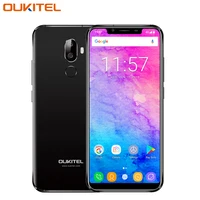Retailers know they must continually improve to meet customers’ needs and keep them interested. That often means they turn to technology. There are several new advancements you can expect to see more often in the stores where you shop this year — here are six of them.
1. Augmented Reality to Stimulate Purchases
Augmented reality (AR) is becoming a fun, helpful way for people to envision using products before they buy them. MAC Cosmetics unveiled an AR-powered mirror that lets people experiment with 30 different eye makeup variations via a live video of a user. The mirror also reflects the looks in different lighting conditions.

You can already see this try-on mirror at MAC Cosmetics outlets in the U.S., but the brand anticipates a worldwide rollout this year.

Wow! You need to see this AR game
Check it out2. Tablets That Replace or Enhance Shopping Carts
Since so many people are familiar with tablets and many individuals own them, retailers have evaluated ways to make the gadgets part of a shopping trip. Crate & Barrel launched a pilot program that lets shoppers take a tablet called a “Mobile Tote” and carry it around the store to scan the items they wanted to buy. Then, they could go through an exclusive checkout line where a store representative gathered the merchandise for them.
Also, at a recent trade show, Focal Systems showed off its tablets that attach to grocery carts. The accessories help with navigation or highlight promotional offers for customers. They work through artificial intelligence and reportedly increase the number of things in a person’s basket by an average of 10 percent.
If the cart tablets work as well as people hope they will, this kind of in-store tech could reduce the likelihood of shoppers having to find store associates to ask them questions. Plus, when customers get disoriented in a store and can’t find the necessary answers themselves with no employees in sight, they may give up on buying items altogether. The tablets could help reduce that occurrence.

The 5 best smartphones for under $200
Find out now3. Apps That Sense When a Person Enters a Store and Offer Help
Many stores already have standalone apps made to encourage people to get in their cars and drive to physical stores or purchase things online. However, Walmart recently updated its app to provide more support for in-store shoppers as soon as they walk in.
Once a person with the Walmart app on their phone enters the store, the app transitions into a Store Assistant mode, providing information about where to find items in the store and whether they’re in stock.
Walmart’s representatives think if they can get shoppers to embrace the idea of doing in-app searches for items in the stores, it’ll be easier to shape the entire purchasing experience.

If you Love Shopping, you Need these 6 Apps
Read Now4. Fully Branded Credit Card Terminals
People are accustomed to entering their PINs on keypads at the checkout and watching the accompanying screens for confirmation of transaction approvals. However, American Apparel aims to do much more for its customers during the checkout process. The terminals it offers capture customer emails and relay information about the brand’s loyalty program. They also can generate e-receipts and feature brand-centric graphics.
5. Dynamic Store Shelves That Dispense Information and Attract Attention
The price and other pertinent information displayed about a product available to buy could play a key role in whether people decide to purchase the item or not. Sometimes, pricing information is unclear or seems outdated.
However, Kroger is one of the major retailers experimenting with digital “smart shelves.” After a successful test run, the grocery chain will add them to almost 200 of its locations this year.
Store representatives can quickly change prices or use engaging videos to attract attention from shoppers who aren’t looking directly at a shelf. From the consumer side of things, the prices for items are easy to read, which should reduce potential confusion.
6. IoT Sensors That Capture Insights about Customers and Products
You can expect to see more stores using sensors connected to the Internet of Things (IoT) this year. Samsung even offers retailers pop-up stores for rent that come equipped with sensors and other connected devices, allowing short-term analytics tracking for brands that may not have the resources to invest in the IoT in more extensive ways.
By looking at the metrics captured inside those particular stores, retailers can understand how customers spend their time there, view demographic information, or filter statistics based on the time of day.
Also, some of the IoT technologies that benefit customers originate outside the stores. Mercedes-Benz provides a sensor that attaches to delivery vans.
Launched in Europe with plans to make it available elsewhere, the accessory allows fleet managers to track the location of delivery vehicles and adjust routes. Drivers use mobile apps to communicate with fleet managers and keep them abreast of progress and obstacles, too.
These are some of the most impressive advancements disrupting the retail landscape. If you haven’t seen them in action yet, you probably will soon.

Alexa's cool new updates
Check them out nowImage: JJ Merelo

